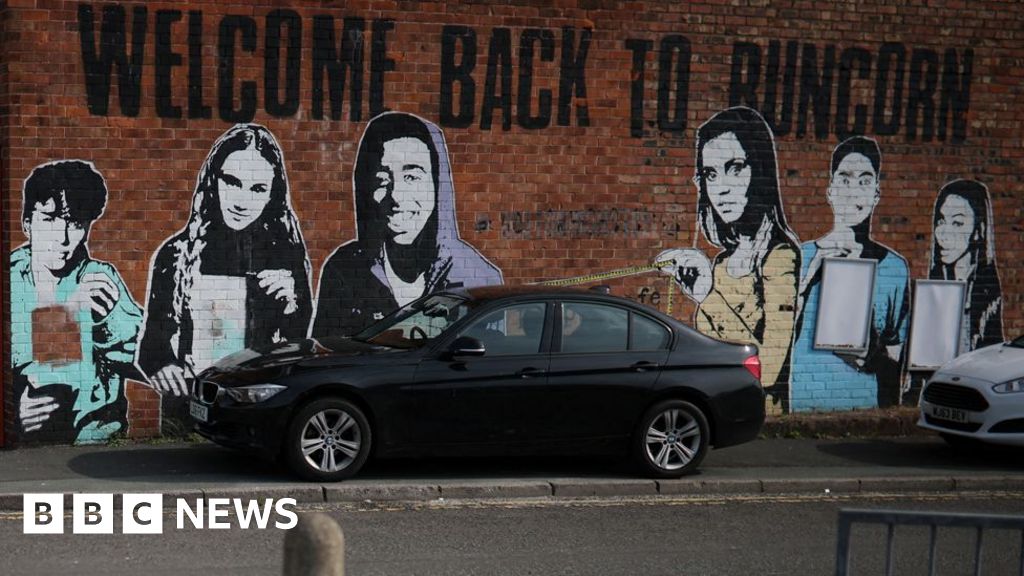Attorney General Pam Bondi's Controversial Claim About Fentanyl and Trump Administration

The Trump administration is under scrutiny after a staggering assertion made by Attorney General Pam Bondi regarding the fight against fentanyl in the United States. During a Cabinet meeting this week, which celebrated President Donald Trumps first 100 days in office, Bondi claimed that under Trump's leadership, the administration had saved a remarkable 75% of the American population from the deadly effects of fentanyl.
Bondi's statement came after she spoke about the administrations efforts in combating fentanyl trafficking, citing the significant amount of drugs removed from the black market. In a moment that many found astonishing, she proclaimed, Since you have been in office, President Trump, your DOJ agencies have seized more than 22 million fentanyl pills3,400 kilos of fentanylwhich savedare you ready for this, media?258 million lives. This assertion raised eyebrows and sparked outrage as it appeared to dramatically inflate the impact of the administrations initiatives.
This claim, however, is not the first of its kind from Bondi. Just a day earlier, she had posted on social media a different version of this statistic, suggesting that Trump had saved over 119 million Americans from the opioid crisis. This discrepancy in numbers only adds to the confusion surrounding the administration's messaging on drug-related issues.
As the nation grapples with a serious public health crisis, the statistics surrounding drug overdoses are alarming. Over the last decade, the United States has seen a significant rise in overdose deaths, largely attributed to the increase in the availability and use of synthetic opioids, particularly fentanyl. This potent substance is far more dangerous than traditional opioids like heroin, as it can lead to a fatal overdose with just a minuscule dosage. Scientific studies indicate that as little as two milligrams of fentanylan amount comparable to a small pinch of saltcan be lethal.
While it is true that previous administrations have made similarly inflated claims regarding drug seizure statistics, there is a critical distinction in the way those statistics are presented. For example, last year, the Biden administration's Department of Justice reported that the fentanyl seized in 2023 had the potential to equate to over 386 million deadly doses. However, this calculation merely serves to illustrate the severity of the fentanyl crisis rather than imply that any singular administrative action directly saved lives.
To provide context, it is important to note that the actual number of Americans who die from fentanyl each year is significantly lower than Bondi's claim. In 2023, slightly over 100,000 Americans lost their lives due to drug overdoses, with around 70% of those deaths attributed to fentanyl use. Furthermore, the assertion that 258 million Americans are using fentanyl is misleading, as statistics from the National Center for Drug Abuse Statistics reveal that approximately 10 million Americans misuse opioids annually.
In addition to the questionable math, Bondis comments come at a time when a pivotal shift in overdose death trends has been observed. After years of relentless increases, overdose deaths in the United States have shown signs of decline over the past two years. However, this progress is now at risk, particularly due to proposed cuts by the Trump administration to federal funding for numerous substance abuse prevention and treatment programs. These proposed cuts target vital initiatives, including those that provide naloxone, a life-saving overdose reversal medication.
Moreover, the administration has sought to eliminate approximately $11 billion in grants established during the COVID-19 pandemic, which were crucial for mental health and substance abuse services. In alignment with these cuts, Trump's administration has taken steps to dismantle the Substance Abuse and Mental Health Services Administration (SAMHSA), the federal agency primarily responsible for addressing the drug overdose crisis. Speculation suggests that up to 50% of the workforce within SAMHSA may face job eliminations, and the agency itself could potentially be disbanded as part of a sweeping restructuring effort.
In conclusion, the assertion that 258 million Americans have been saved from fentanyl under President Trump is a stark exaggeration, and the current policies could jeopardize progress made in combating opioid overdoses. The administration's actions may even pave the way for an increase in overdose deaths in the coming months and years, a reality that starkly contrasts with Bondis claims.























